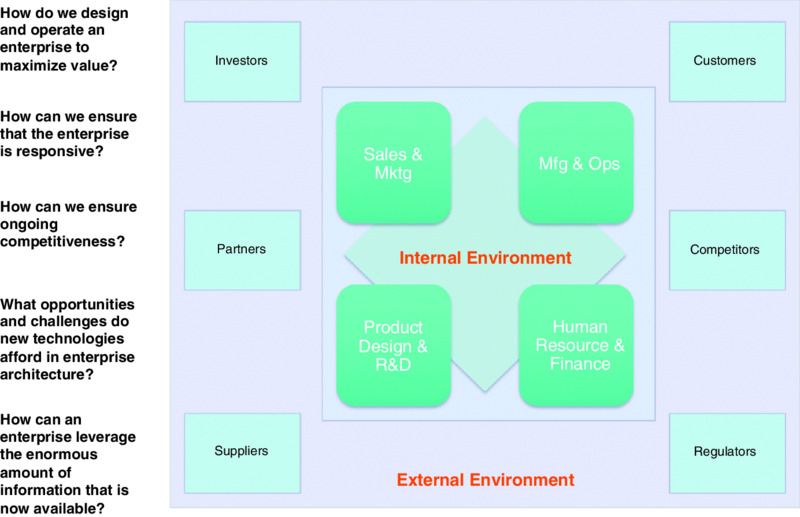CHAPTER 4 THE INTELLIGENT ENTERPRISE OF TOMORROW
4.1 The Road to an Intelligent Enterprise
At the core of all enterprises is their commercial or business architecture. How are they set up to function? How are they designed to operate to maximize value to their stakeholders? How are they set up to compete? How are they designed to ensure responsiveness to the market? These are core questions that an enterprise architecture should revolve around as shown in Figure 4.1.

Figure 4.1 Enterprise environment
Post Adam Smith, enterprise architecture was based on the principle division of labor and centered on specialized functions. Each function was supposed to become highly competent with the dedicated focus and skill of the functional teams and to prevent skill fragmentation in producing the end product at scale. This was an environment where business technology was nonexistent. So, the only way to gain scale was to specialize. Such a view did not fully account for the silos that it would create in an organization and did not have the customer interests fully in sight. As a result there have been many proponents of a business-process centric architecture. Hammer and Champy (1993, 2004) forcefully articulated this position in their groundbreaking work. In the modern era with an increasingly flat world and with a significantly different technology landscape, a process-centric architecture ...
Get The Intelligent Enterprise in the Era of Big Data now with the O’Reilly learning platform.
O’Reilly members experience books, live events, courses curated by job role, and more from O’Reilly and nearly 200 top publishers.

